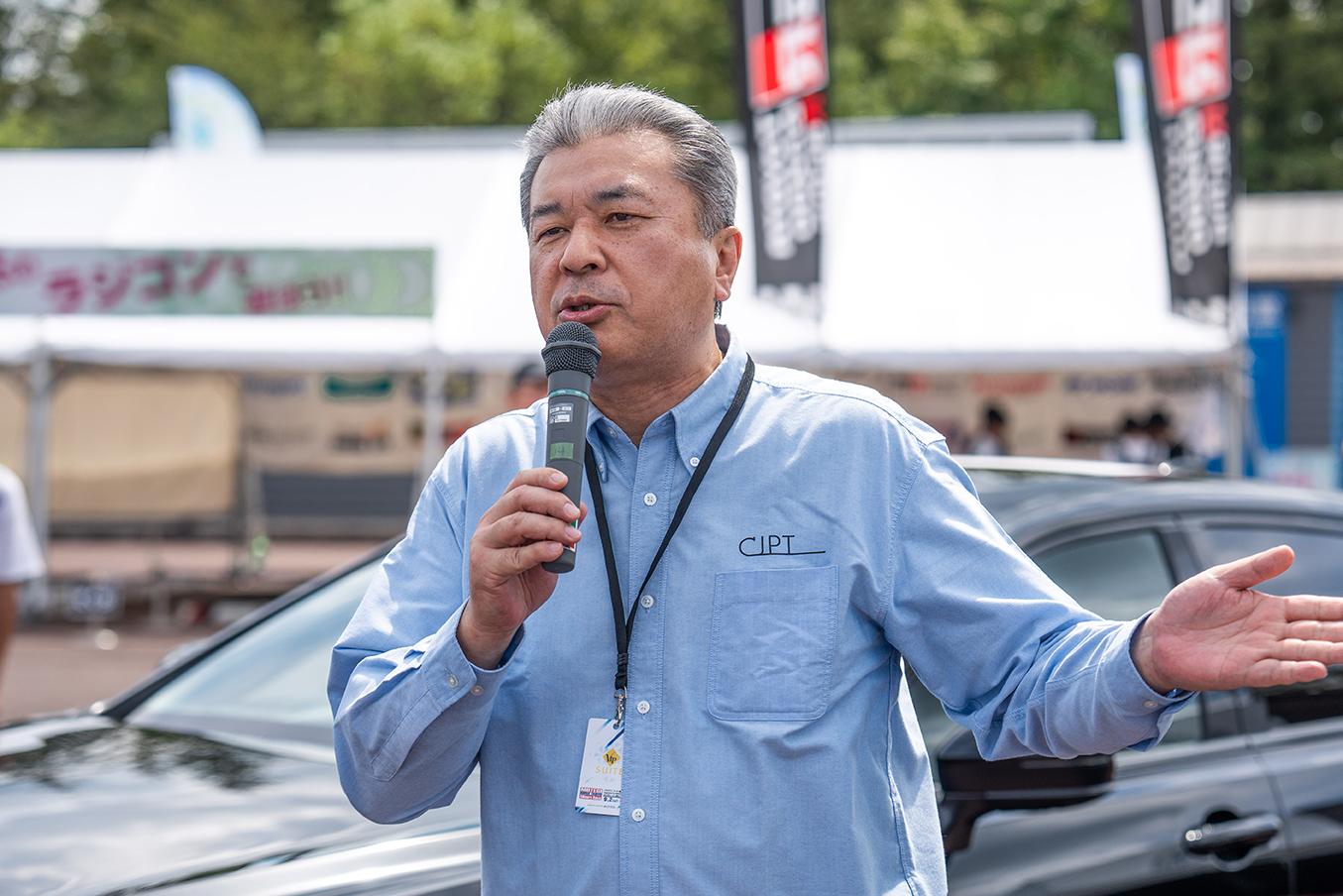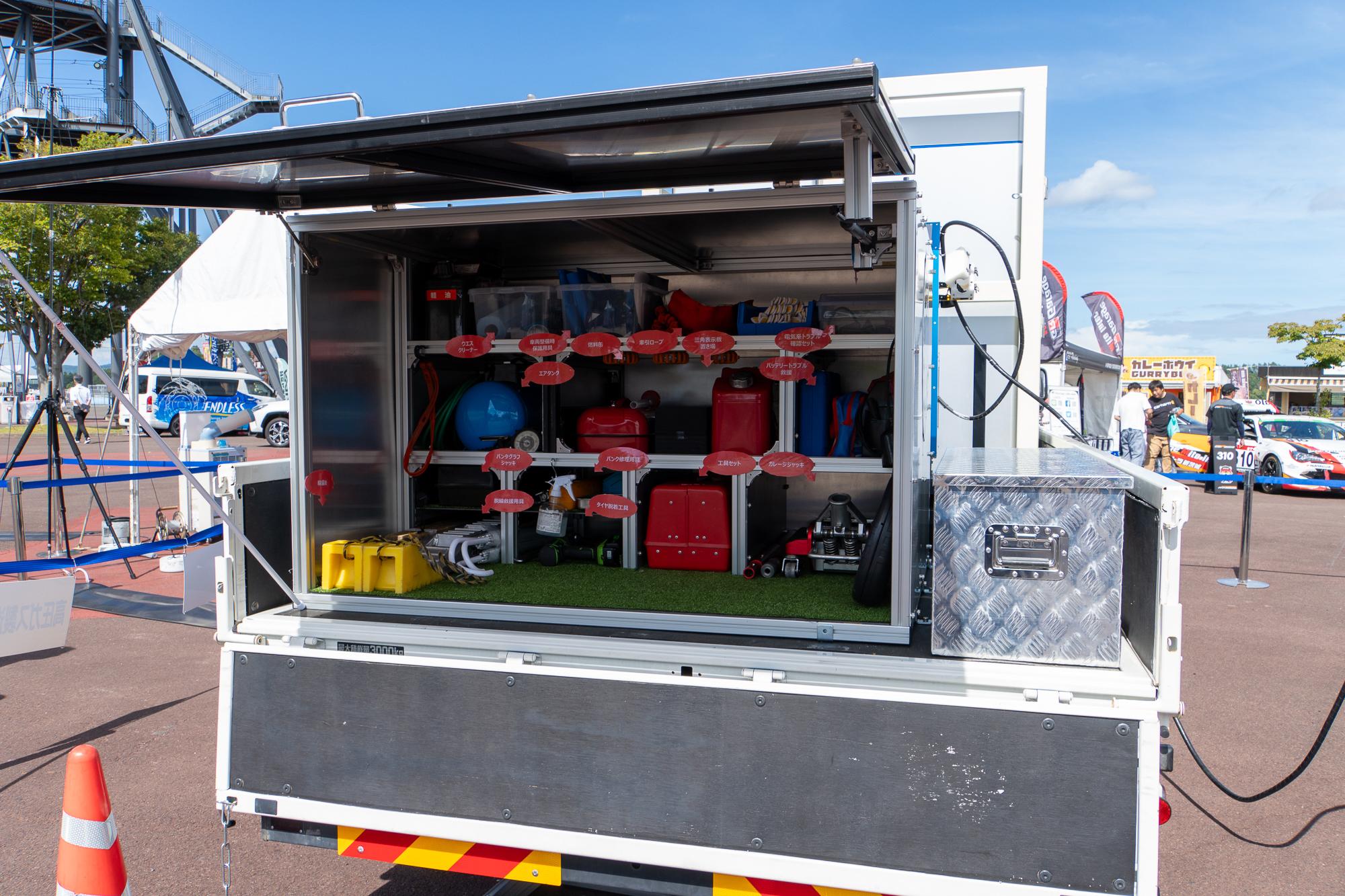
Following the FCEV garbage truck unveiled at Super Taikyu Round 4 in July, the season's fifth race featured an FCEV road service vehicle. As new trials continue to kick off, what is behind these efforts to create a hydrogen society?

The Motegi Super Taikyu 5 Hours Race, Round 5 of the 2023 ENEOS Super Taikyu Series Supported by Bridgestone, was held in Tochigi Prefecture on September 2 and 3.
Motegi was also the venue for the unveiling of a hydrogen road service vehicle jointly developed by Toyota and the Japan Automobile Federation (JAF). Following on from Super Taikyu Autopolis (Hita, Oita), this was the second straight race to showcase a new type of fuel cell electric vehicle (FCEV)—a sign of the determination and dedication of Japanese manufacturers.
The vehicles crucial for creating a hydrogen society
Following the FCEV garbage truck unveiled at Autopolis in July, the Mobility Resort Motegi event space provided a first look at the JAF hydrogen road service vehicle.
A key part of creating a hydrogen society, this vehicle was designed to assist hydrogen-powered cars if they run out of fuel on the road.
As part of its roadside services, JAF annually assists some 50,000 vehicles stranded without fuel, including 700 battery electric vehicles (BEVs) that have run out of charge and around 20 cars needing a hydrogen top-up.
The newly premiered road service vehicle was jointly developed to ensure that, in a hydrogen society with more FCEVs on the road, running out of hydrogen could be handled like other fuels rather than requiring cars to be towed.
Vice President Hiroki Nakajima

During the previous race at Oita Autopolis, we presented a “business to government” approach as one way of bringing hydrogen use closer to citizens' daily lives.
This time, we have brought our first vehicle researched and developed jointly with JAF.
Though still a prototype, this FC truck is equipped with hydrogen modules that enable it to directly refuel other vehicles.
At present, if a driver runs out of hydrogen on the road without a refueling station nearby, their only option is to call a tow truck.
In such situations, the JAF vehicle can be sent out to supply hydrogen. Although part of road services, such vehicles could also deliver hydrogen for home generators and stationary power generation units in the future.
With JAF’s extensive cooperation, Toyota outfitted the vehicle with all the functions necessary to provide roadside assistance, not just hydrogen refueling.
Vice President Keitaro Shinomiya, JAF

We developed this vehicle together with Toyota, which is conducting research aimed at advancing a hydrogen society.
In addition to supplying hydrogen, this vehicle brings together everything needed to handle the five main problems on the road, from flat tires and dead batteries to running out of fuel.

As energy options continue to increase, JAF is developing vehicles that can supply various fuels, including electricity and gasoline, when they run out.
Vice President Nakajima
This initiative started from the idea that mobility should lead the way in creating a hydrogen society.
Without road service support, we can’t expect people to feel confident using hydrogen vehicles, which is why we pursued this kind of initiative with JAF among our first actions.

